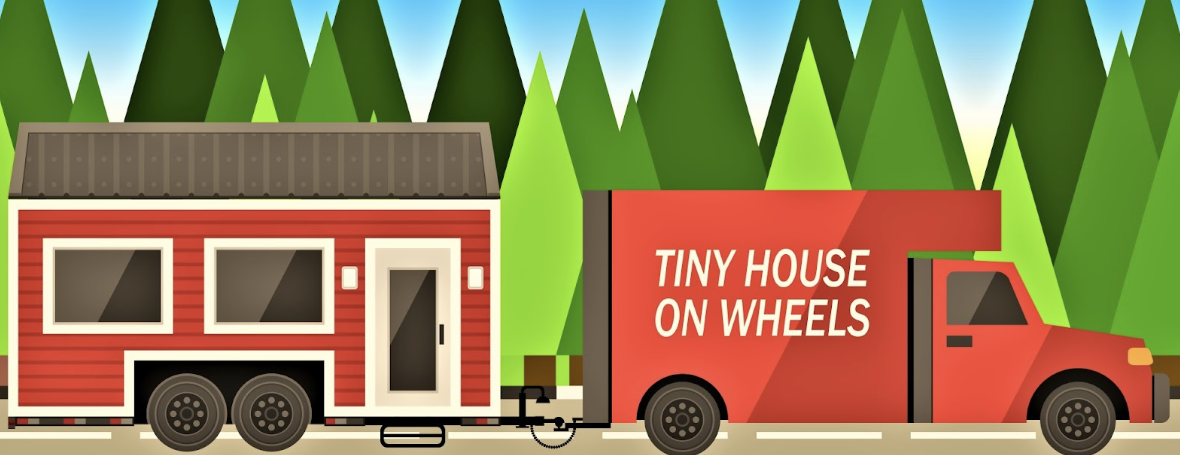6 Steps You Should Take to Improve the Exterior of Your Tiny Home
If you own a tiny home, you understand the importance of maximizing every inch of space, inside and out. While the interior often gets the spotlight, the exterior is just as crucial for functionality and aesthetics. Enhancing the exterior of your tiny home not only boosts its curb appeal but also adds to your overall living experience. Here are six essential steps you can take to improve the exterior of your tiny home, making it more inviting, efficient, and visually appealing.
1. Seek a Professional Help
While DIY projects can be rewarding, certain tasks may require specialized skills and knowledge. Whether it's consulting with a landscape architect to design a sustainable outdoor environment or hiring a licensed contractor for complex construction projects, investing in professional help ensures quality results and peace of mind. To improve the exterior, First American Roofing can help you with specialized high-quality roofing solutions tailored to your specific needs and preferences. Professionals can offer valuable insights, expertise, and resources to help you achieve your vision effectively and efficiently.
2. Enhance Outdoor Living Spaces
Make the most of your outdoor space by creating inviting areas for relaxation and entertainment. Install a deck or patio that seamlessly integrates with your tiny home's design. Choose weather-resistant materials that require minimal maintenance, such as composite decking or natural stone pavers. Furnish the outdoor space with comfortable seating, shade options, and functional accessories like built-in storage or planters. Creating an outdoor oasis extends your living area and enhances the overall enjoyment of your tiny home.
Create Functional Zones: Designate specific areas for dining, lounging, gardening, and recreation to maximize the utility of your outdoor space. Consider the flow of traffic and how you can optimize each zone for comfort and convenience. By delineating functional zones, you can create a cohesive outdoor living environment that accommodates various activities and enhances usability.
Integrate Natural Elements: Incorporate elements of nature, such as water features, fire pits, or natural landscaping, to create a tranquil and immersive outdoor experience. Embrace the beauty of your surroundings by showcasing natural materials like wood, stone, and native vegetation. By integrating natural elements, you can foster a sense of connection with the environment and promote relaxation and well-being.
Add Privacy and Shade: Enhance the comfort and privacy of your outdoor living spaces by incorporating screening elements, such as trellises, fences, or vegetation barriers. Strategically position shade structures, like pergolas, umbrellas, or retractable awnings, to provide relief from the sun and create inviting shady retreats. By prioritizing privacy and shade, you can create intimate outdoor spaces that offer respite and seclusion.
3. Incorporate Sustainable Landscaping
Transform your tiny home's exterior with sustainable landscaping practices that benefit both the environment and your well-being. Choose native plants that thrive in your region's climate and require less water and maintenance. Implement water-saving techniques such as drip irrigation systems and rainwater harvesting to conserve resources. Create a diverse ecosystem by incorporating a mix of flowering plants, shrubs, and trees to attract pollinators and wildlife. Sustainable landscaping not only beautifies your surroundings but also promotes biodiversity and ecological balance.
4. Invest in Energy-Efficient Features
Reduce your carbon footprint and utility bills by incorporating energy-efficient features into your tiny home's exterior design. Install solar panels to harness renewable energy and power your home's electrical systems. Opt for energy-efficient windows and doors that provide insulation and minimize heat transfer. Consider adding exterior shading elements like awnings or pergolas to reduce solar heat gain during the warmer months. By prioritizing energy efficiency, you can create a more comfortable and sustainable living space.
5. Implement Smart Storage Solutions
Maximize the functionality of your tiny home's exterior by implementing smart storage solutions that optimize space and organization. Build custom storage units or install modular shelving systems to store outdoor equipment, tools, and recreational gear.
Utilize vertical space with wall-mounted racks or hooks for bicycles, kayaks, and other bulky items. Incorporate multifunctional furniture pieces with hidden storage compartments to maximize versatility. Efficient storage solutions not only declutter your outdoor space but also streamline daily activities and enhance accessibility.
6. Personalize with Exterior Accents
Add personality and charm to your tiny home's exterior with carefully chosen accents and decorative elements. Install exterior lighting fixtures to illuminate pathways, entryways, and outdoor living areas for added safety and ambiance. Incorporate architectural details such as window shutters, trim, or decorative moldings to enhance visual interest and character.
Showcase your creativity with DIY projects like hand-painted murals, mosaic accents, or upcycled garden art. By infusing your unique style into the exterior design, you can create a truly personalized and inviting space.
Improving the exterior of your tiny home is a rewarding endeavor that enhances its functionality, aesthetics, and overall livability. By following these six steps, you can transform your outdoor space into a welcoming retreat that reflects your lifestyle and values. Whether you're optimizing for sustainability, maximizing space, or simply adding your personal touch, these strategies empower you to create an exterior that complements your tiny home and enriches your daily life.










